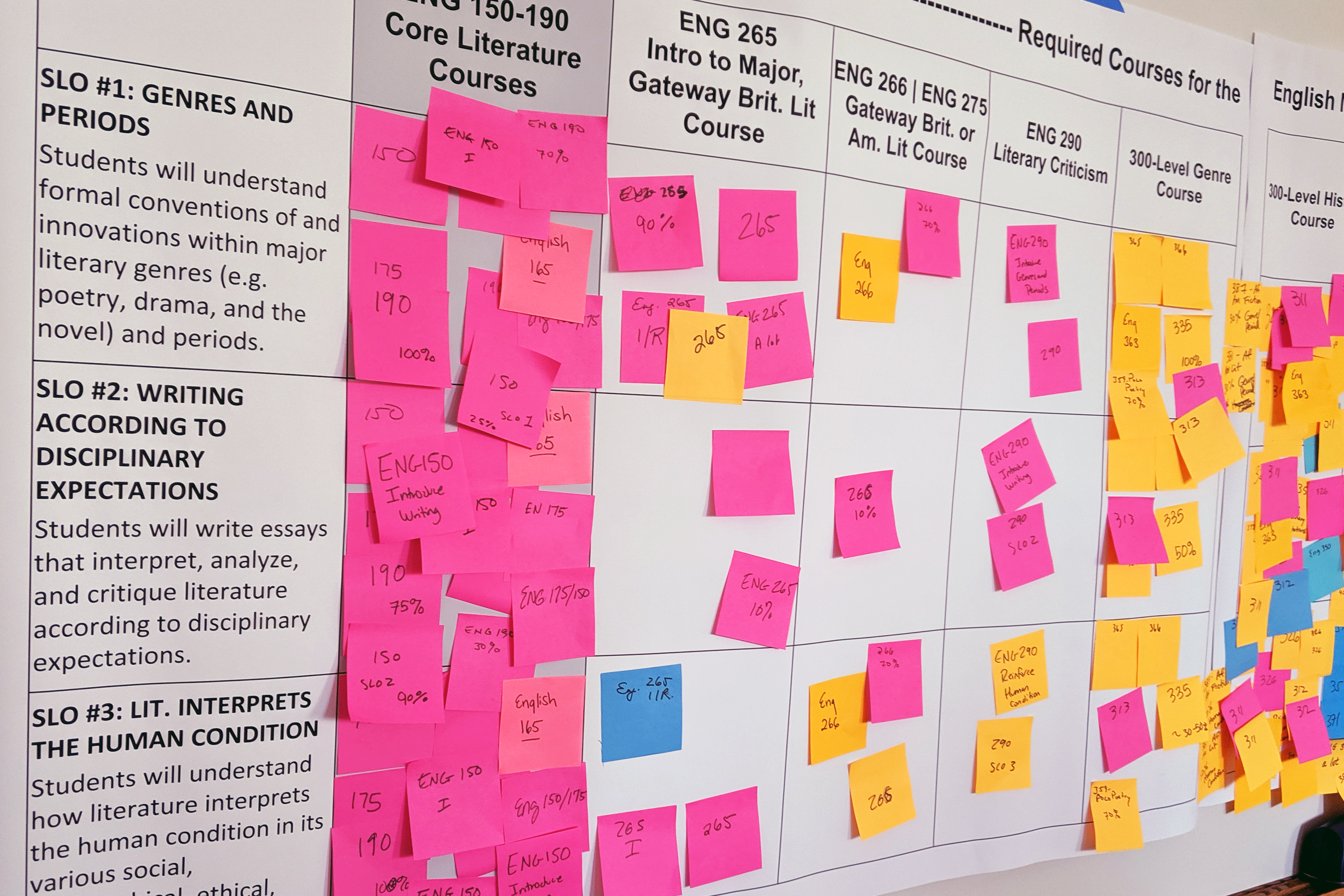Curriculum Mapping

Curriculum mapping is a process that academic programs can use to evaluate the alignment of their course offerings with their goals for student learning. A curriculum map is a visual tool to analyze the learning opportunities provided in a program to achieve the student learning outcomes. A map helps programs determine if their curriculum is giving students enough opportunities to develop mastery of the learning outcomes and helps the program see how all the courses are working together to create a curriculum aligned to the outcomes. Maps document what is taught and when; profile the intentionality over the continuum of students’ learning; show coherence and progression between courses; aligns instruction in courses with the program SLOs; help inform the development of an assessment plan; identifies problems with course sequencing; and reveal gaps in a curriculum.
This hypothetical curricular map of a fictitious STEM program illustrates both the structure of a map as well as how a map can reveal opportunities to improve the pathways for student learning in a program. In this map, the program’s student learning outcomes are listed in the first column. The required courses are listed across the top in the first row. For each course, the level of learning experience associated with each outcome is indicated. If the course does not address a learning outcome, then that cell of the table is left blank. This map reveals that there is no required course in the curriculum that provides an advanced level learning experience for the first outcome; that students are expected to jump to an advanced level of achievement for outcome 3 without any intermediate, reinforcing learning opportunities; and that there are no beginning level opportunities for outcome 4.
| Student Learning Outcomes | 110 | 210 | 310 | 410 |
|---|---|---|---|---|
| 1. Understand and apply models of structural dynamics | B | I | ||
| 2. Accurately collect and interpret numerical data | B | I | A | A |
| 3. Use, choose appropriate modern laboratory instruments for analysis | B | A | ||
| 4. Write, present scientific data using scientific language and conventions | I | A |
Using a Map
Once a map is made, programs can use it to engage in robust, reflective conversation about teaching and learning within the program. Some of the questions that a program can consider include:
From an SLO Perspective:
- Does each outcome have a reasonable sequence of progression for the development of needed proficiencies from beginner (B) to intermediate (I), to advanced (A)?
- Are any of the outcomes over-emphasized or under-emphasized?
- In what ways is there consensus and where are differences in what constitutes the proficiencies associated with “advanced” for each SLO?
- What should be the expectations for “Beginner” and “Intermediate” proficiencies for the SLOs?
- How are the courses working together in order for students to be able to effectively transfer and build their learning from one course to the next?
- Does each SLO have an integrative and/or culminating experience for the students to practice and apply what they have learning into new contexts and demonstrate mastery of outcomes?
From a Course Perspective:
- Do all required courses address at least one outcome?
- Are any courses “trying to do too much” in terms of aligning with the outcomes?
- If a required course does not align with any outcome, should the course change or should the SLO change?
- For a given course, evaluate similarities or differences in what outcomes are met, the level at which it is met, and the way it is assessed.
- Are there elective courses that the map reveals as being integral to the learning sequences for mastery?
- If you have a capstone course, in what ways is it serving as a demonstration of mastery of your student learning outcomes?
From a Group or Cluster of Courses Perspective:
- Based upon the map, are XX and YY providing coherent learning experiences for students related to developing toward mastery of the SLOs, no matter which course they take?
- What are the challenges associated with achieving this coherence?
- What teaching/learning opportunities exist, for both faculty and students, if coherence in alignment with the SLOs is achieved?
- For a multi-section introductory/gateway course, are students having consistent learning experiences related to opportunities to progress toward mastery of the SLOs?
- What steps can be taken to ensure that students have consistent learning experiences so that they are prepared for the next courses they will take?
